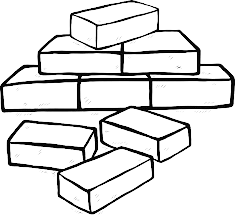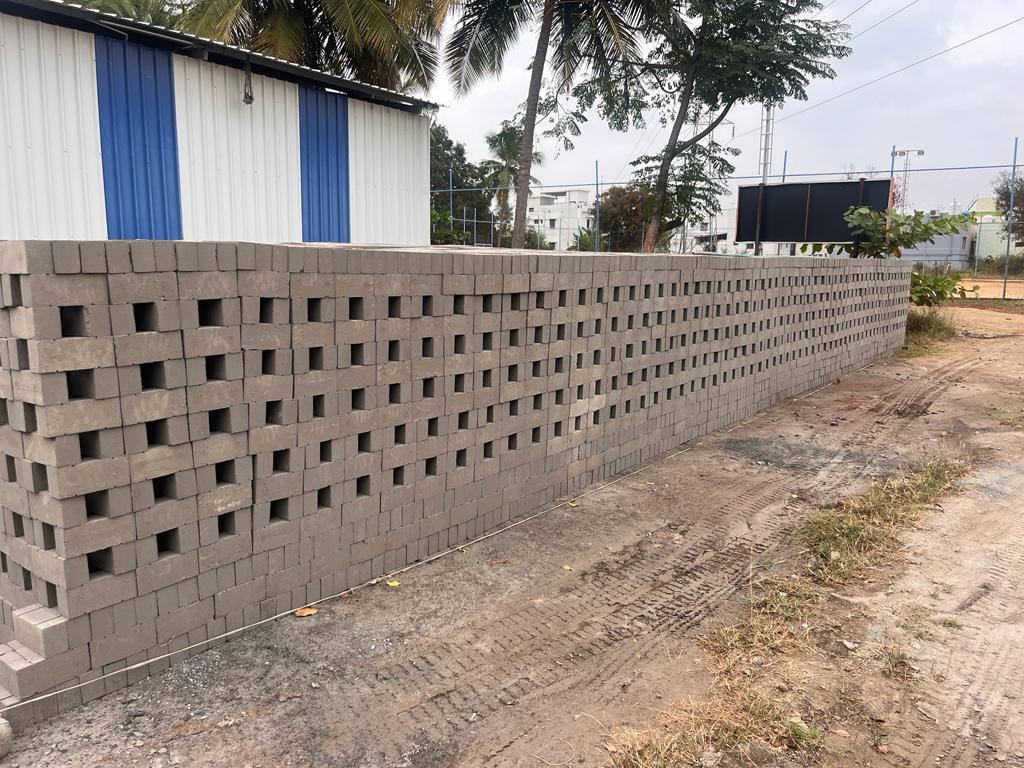Some of the key advantages of Fly Ash Bricks include

Environment Sustainability
Fly ash is a byproduct of coal combustion, and using it in brick manufacturing helps in utilizing a waste material that would otherwise be disposed of in landfills, reducing environmental impact.

Reduced Carbon Emissions
Manufacturing fly ash bricks requires less energy compared to traditional clay bricks, leading to lower carbon dioxide emissions. This makes them a unique environmental friendly option.

Cost - Effective
Fly ash is usually available at a lower cost than traditional raw materials like clay. This coupled with lower energy requirements during manufacturing, makes fly ash bricks a cost-effective alternative.

Light Weight
Fly ash bricks are lighter in weight compared to traditional clay bricks. This characteristic makes them easier to handle in construction, reducing transportation costs and labor efforts.

Improved Insulation
The composition of fly ash bricks often results in better insulation properties compared to clay bricks. They can help in maintaining a more consistent indoor temperature, leading to energy savings in terms of heating and cooling.

Higher Compressive strength
Fly ash bricks can exhibit higher compressive strength than traditional clay bricks. This attribute contributes to the durability and structural integrity of buildings.

Better Sound Insulation
The porous nature of fly ash bricks contributes to better sound insulation properties. This can be advantageous in creating quieter and more comfortable living or working environments

Reduced Water Absorption
Fly ash bricks typically have lower water absorption rates compared to clay bricks. This reduces the risk of efflorescence and other issues associated with excessive water absorption.

Compliance with Green Building Standards
The use of fly ash bricks aligns with sustainable and green building practices, which contribute to meet certification requirements for green building standards.

Compressive Strength
Compressive strength is a key parameter that indicates the ability of a material to withstand axial loads (pressure or squeezing forces). Fly ash bricks usually have compressive strengths ranging from 35 to 150 kg/cm² or even higher, depending on the specific mix design and curing conditions.

Higher Compressive Strength than Clay Bricks
Fly ash bricks have higher compressive strength compared to traditional clay bricks. This higher strength contributes to the durability and structural integrity of buildings.

Quality Control
The strength of fly ash bricks is influenced by factors such as the quality of fly ash, cement, sand and other additives used in the manufacturing process. Strict quality control measures during production help ensure consistent and reliable strength characteristics.

Curing Conditions
Proper curing is essential for achieving the designed strength of fly ash bricks. Adequate curing time and conditions, such as maintaining optimal moisture levels, contribute to the development of the desired strength.

Mix Design
The proportions of fly ash, cement, sand, and other additives in the mix design play a crucial role in determining the strength of fly ash bricks. Optimal mix proportions need to be maintained for achieving the desired strength levels.

Testing Standards
Compressive strength of fly ash bricks is typically tested according to relevant standards, such as Indian Standards (IS) or ASTM International standards. These standards provide guidelines for testing procedures and acceptance criteria.
Benefits of Fly Ash Bricks

- Reduced Water Content
- Improved Workability
- Reduced Segregation
- Improved Pumpability
- Improved Finishing
- Low Heat of Hydration
- Lower Drying Shrinkage
- Improved Long Term Strength
- Decreased Permeability
- Increased Durability
- Improved resistance to Alkali Silica Reactivity
- Improved resistance to Sulfate Attack
- Low Chloride Ingress
- Good Carbonation Protection
- Reduced Efflorescence
IS 12894: 2002 - Guidelines for Manufacture of Fly Ash Lime Bricks
This standard provides guidelines for the manufacturing process of fly ash bricks that use lime as one of the key components. It covers aspects such as raw materials, mix proportions, compaction, curing, and testing procedures. We at SK Bricks, manufacture by following these guidelines to ensure the quality and performance of the fly ash bricks
It’s important to note that the specific advantages may vary depending on the manufacturing process, quality of raw materials, and local conditions. However, overall, fly ash bricks offer a compelling alternative to traditional clay bricks with their eco-friendly and cost-effective characteristics. The strength of fly ash bricks can vary depending on factors such as quality of raw materials, manufacturing process and curing conditions. Generally, fly ash bricks exhibit good compressive strength, which is a crucial property for any building material.





